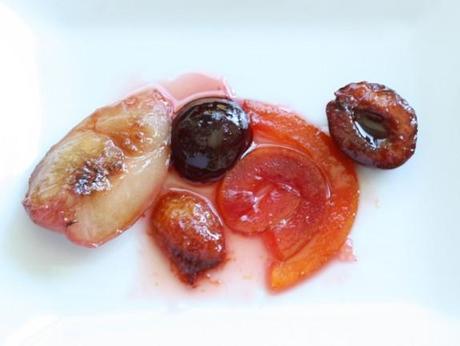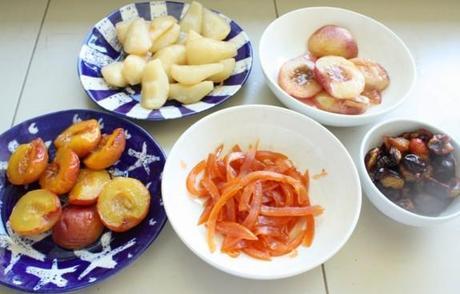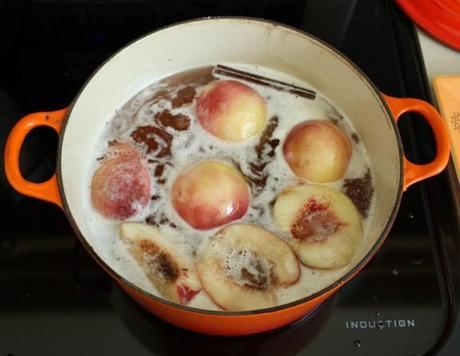 So I’ve been on a Jane Gardam binge lately, reading everything of hers I can get my hands on. Her writing is addictive, her stories filled with all-too-human characters and happy small surprises. (Start with Old Filth; and no, it’s not what you think.)
So I’ve been on a Jane Gardam binge lately, reading everything of hers I can get my hands on. Her writing is addictive, her stories filled with all-too-human characters and happy small surprises. (Start with Old Filth; and no, it’s not what you think.)



“‘Oh, help!’ she cried. ‘But they’re hot. They are killing me. They are burning my throat. They are burning right down to my heart.’”
Vibrant jewel-toned fruits that burn all the way down to your heart? Seriously, how could you not investigate?
It turns out Mostarda di Cremona is an Italian preserve of summer fruits in a sweet-hot syrup infused with mustard oil. It dates back to the Renaissance (!) and is traditionally served with poultry and game. Perfect for the holidays, good anytime with a meaty roast or bollito misto.
MOSTARDA DI CREMONA
Italian Fruit Preseved in Hot Mustard Syrup
Recipe makes 6 pints
5 lbs. of mixed summer fruits: a selection of peaches, pears, plums, nectarines, apricots, cherries
Rind of one grapefruit
4 cups white wine vinegar
1/4 cup yellow mustard seeds
6 cups sugar
1 cinnamon stick
1. Put the wine vinegar and mustard seeds into a large, heavy pot. Bring to a boil. Turn off the heat and let the mustard seeds infuse the vinegar for 2 hours.
2. Prepare 6 pint jars for canning: wash the jars and lids in soapy water and rinse. Keep the jars at the ready in a pot of simmering water. Add the lids to the simmering water a couple of minutes before use — they can become compromised if left too long in simmering water.
3. Prepare the fruit: Only pears need to be peeled, then cut into quarters, remove the core. Peaches, plums, nectarines and apricots are cut in half, the pits removed and discarded. Pit the cherries. Peel the grapefruit and cut the rind into thin strips. Set aside the grapefruit flesh for another use.
3. Strain the mustard seeds from the vinegar. Return the vinegar to the pot, bring to a boil. Add the sugar and cinnamon stick, and over medium heat stir until the sugar dissolves.
4. Bring the a boil and cook for 25 minutes until reduced and syrupy. Stay close to make sure it doesn’t boil over.
5. When the syrup is thick, remove and discard the cinnamon stick. Use a slotted spoon to cook the fruit in small batches, one variety at a time. Carefully add the fruit to the simmering syrup, starting with the biggest and firmest, working your way down to the smaller, riper pieces.
6. Start with the grapefruit rind — it takes a little longer, so it can stay in while you cook the other fruits. It’s ready when soft and translucent.
7. The fruit will only take 2 -3 minutes to cook. They are ready when the flesh puffs up a little and the fruit is soft. Use a sharp knife to check for doneness. The flesh should be tender but not falling apart. Once cooked, remove from the hot syrup. Keep each type of fruit separate.
8. When all the fruit is cooked get the sterilized jars ready. Working by type, return the fruit to the still-simmering syrup to reheat. Remove to the jars, distributing evenly. Alternate colors and sizes for the prettiest effect.
9. Fill each jar with hot syrup. Seal and process in a boiling water bath for 15 minutes.
Let the fruits steep for at least two weeks before serving.

Share and Enjoy
